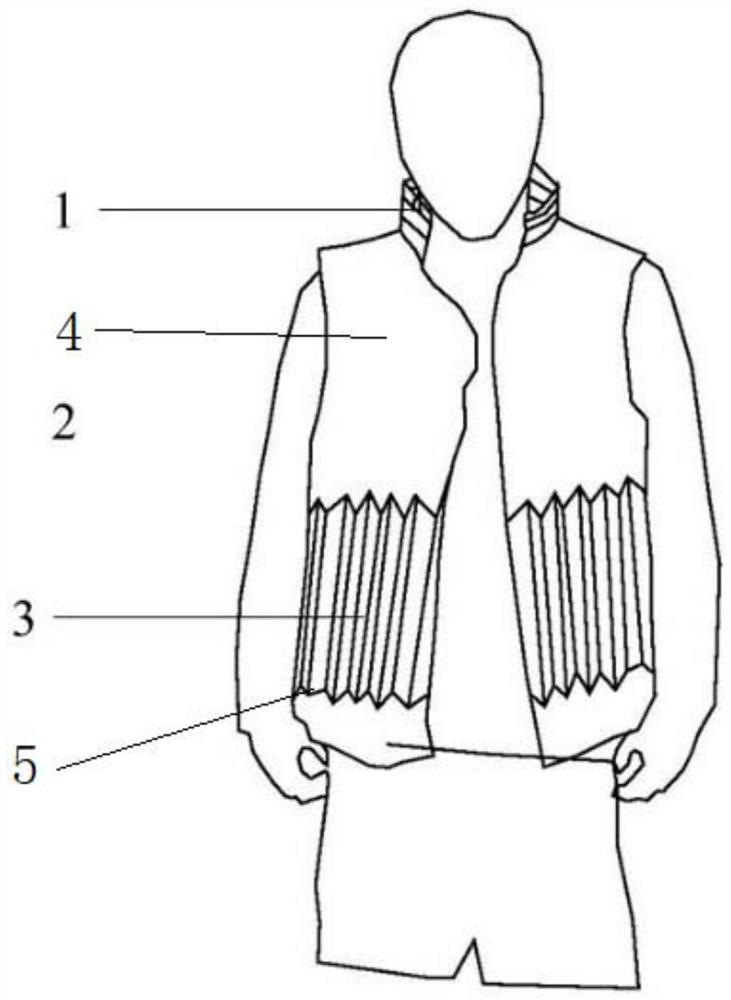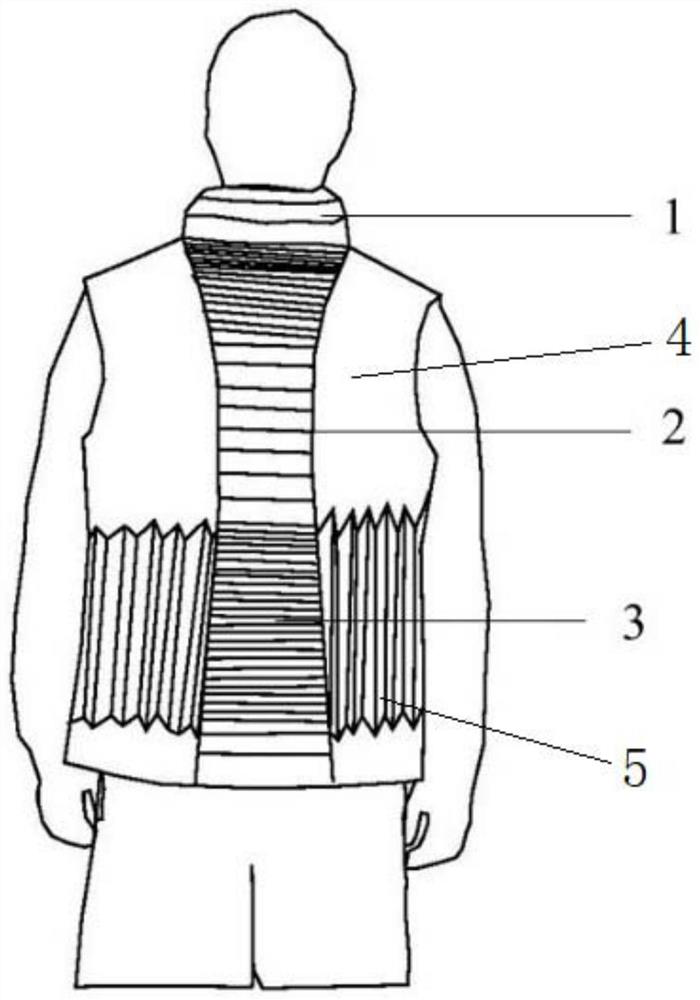Pneumatic spine assisting device
An auxiliary device and spine technology, applied in medical science, diagnosis, diagnostic recording/measurement, etc., can solve problems such as inability to adapt, no active structure design, difficult active auxiliary force, etc., to achieve light structure, easy to wear and carry Portable, lightweight effect
- Summary
- Abstract
- Description
- Claims
- Application Information
AI Technical Summary
Problems solved by technology
Method used
Image
Examples
Embodiment Construction
[0019] The present invention will be further described below in conjunction with the accompanying drawings.
[0020] see figure 1 and figure 2 , the present invention includes vest 4, which is divided into cervical auxiliary area 1, thoracic auxiliary area 2 and lumbar auxiliary area 3. The thoracic auxiliary zone 2 is used to protect the human thoracic spine and provide auxiliary force for its movement. The lumbar auxiliary area 3 includes two kinds of airbags distributed horizontally and vertically. The airbags distributed longitudinally are used to provide the force to tighten the waist, and the airbags distributed horizontally are used to assist the lumbar spine to maintain normal physiological curvature. Cervical auxiliary area 1, thoracic auxiliary area 2, and lumbar auxiliary area 3 are fixed with airbags 5, and the airbags 5 are driven by a pressure supply device. Cervical auxiliary area 1, thoracic auxiliary area 2, and lumbar auxiliary area 3 are all equipped with...
PUM
 Login to View More
Login to View More Abstract
Description
Claims
Application Information
 Login to View More
Login to View More - R&D
- Intellectual Property
- Life Sciences
- Materials
- Tech Scout
- Unparalleled Data Quality
- Higher Quality Content
- 60% Fewer Hallucinations
Browse by: Latest US Patents, China's latest patents, Technical Efficacy Thesaurus, Application Domain, Technology Topic, Popular Technical Reports.
© 2025 PatSnap. All rights reserved.Legal|Privacy policy|Modern Slavery Act Transparency Statement|Sitemap|About US| Contact US: help@patsnap.com


